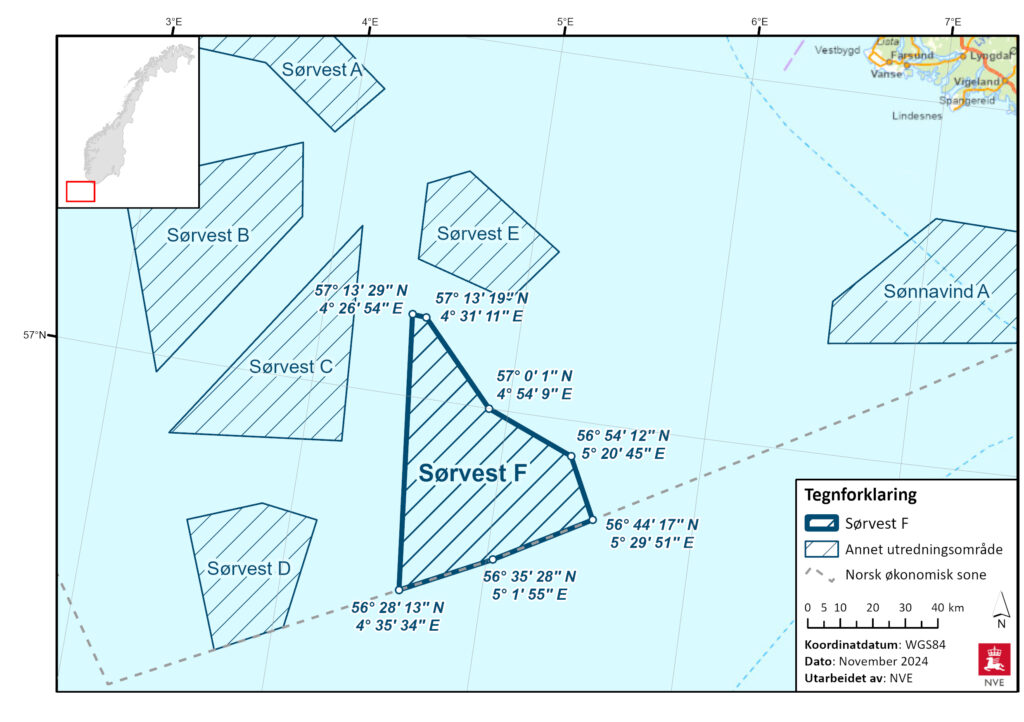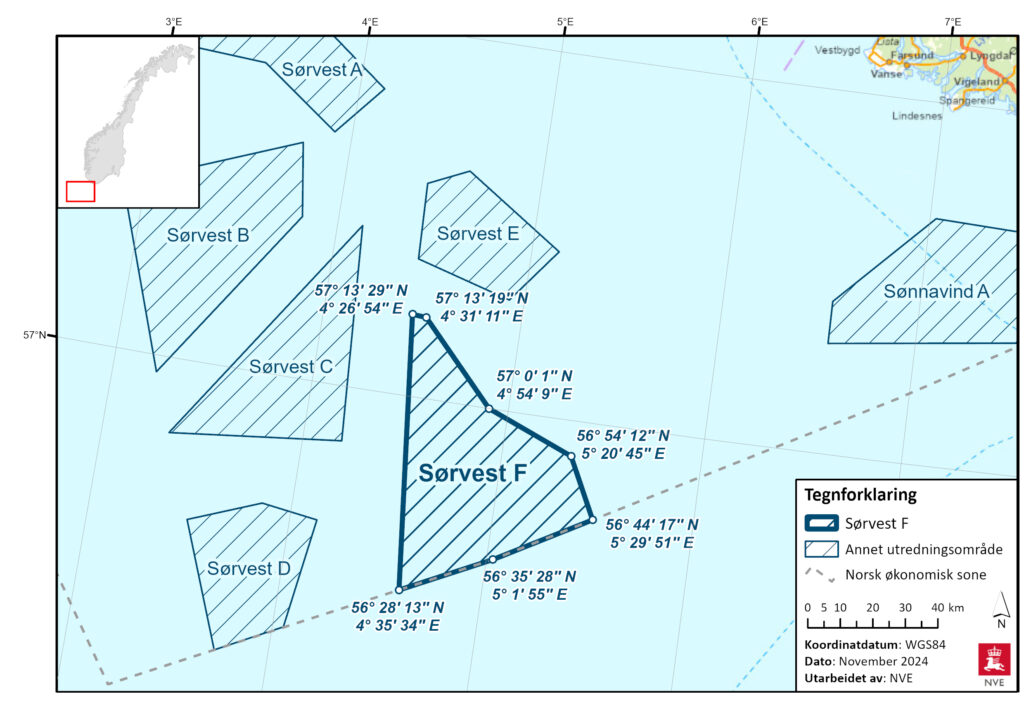The Norwegian government has cancelled plans for another fixed-bottom offshore wind tender in the North Sea due to cost concerns, focusing instead on floating offshore wind projects.
On 10 February, the Ministry of Energy announced it will no longer proceed with the Sørvest F tender, an extension of the 1.5 GW Sørlige Nordsjø II area awarded to Ventyr Energi, a consortium of Parkwind and Ingka Investments, in 2024.

The decision followed a study by transmission system operator Statnett on possible grid solutions for connecting new offshore wind from the Sørvest F area to the onshore grid.
Statnett evaluated five grid concepts, including one connecting to the Norwegian mainland and four hybrid concepts linking to neighboring countries.
The study outlined that offshore wind production with hybrid grid solutions would need state support. Further technological development is required before considering a larger European offshore grid (North Sea grid).
“We are currently facing high costs related to offshore wind production and associated grid solutions. Statnett’s study shows hybrid cables won’t solve these challenges. Offshore wind production will need significant government support, regardless of the grid solution,” said Terje Aasland, Minister of Energy.
The Ministry of Energy stated that future viability of offshore wind with hybrid solutions could change if circumstances and cost factors are more favorable.
“It’s not the right time to plan hybrid cables now. Costs are high, project profitability is challenging, and European regulations are not in place. We will focus on floating offshore wind projects,” said Aasland.
The government plans to continue its offshore wind investment, aiming to announce areas for floating offshore wind soon.
The Norwegian Water Resources and Energy Directorate (NVE) is set to deliver the final part of a strategic impact assessment by summer, highlighting areas suitable for offshore wind, primarily for floating projects.
Based on the assessment, the government will draft a plan for developing offshore wind on the Norwegian continental shelf.
Original Story at www.offshorewind.biz
